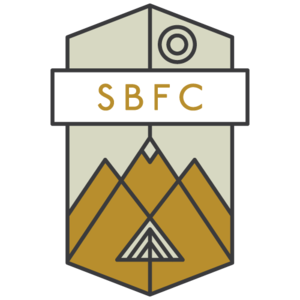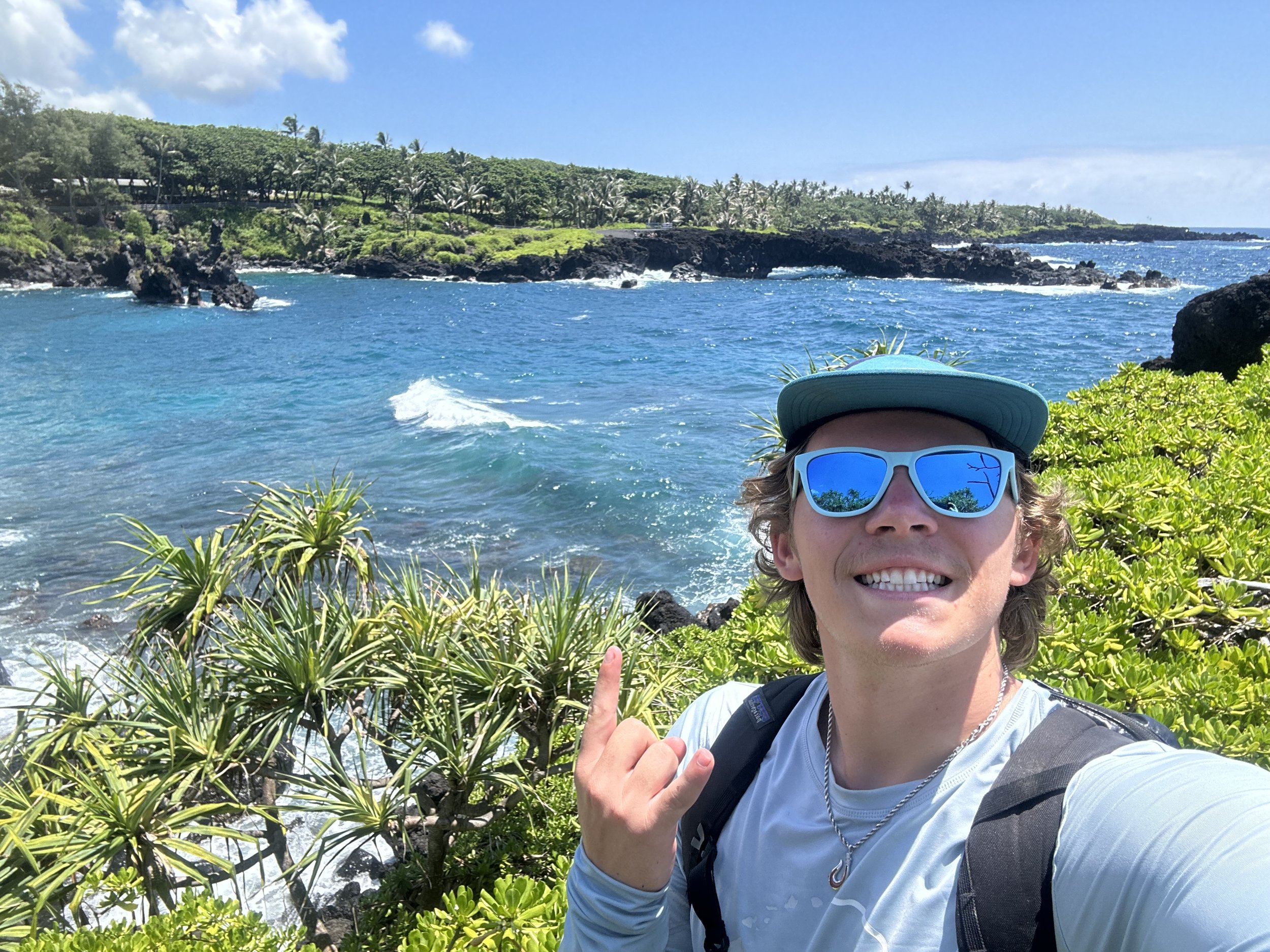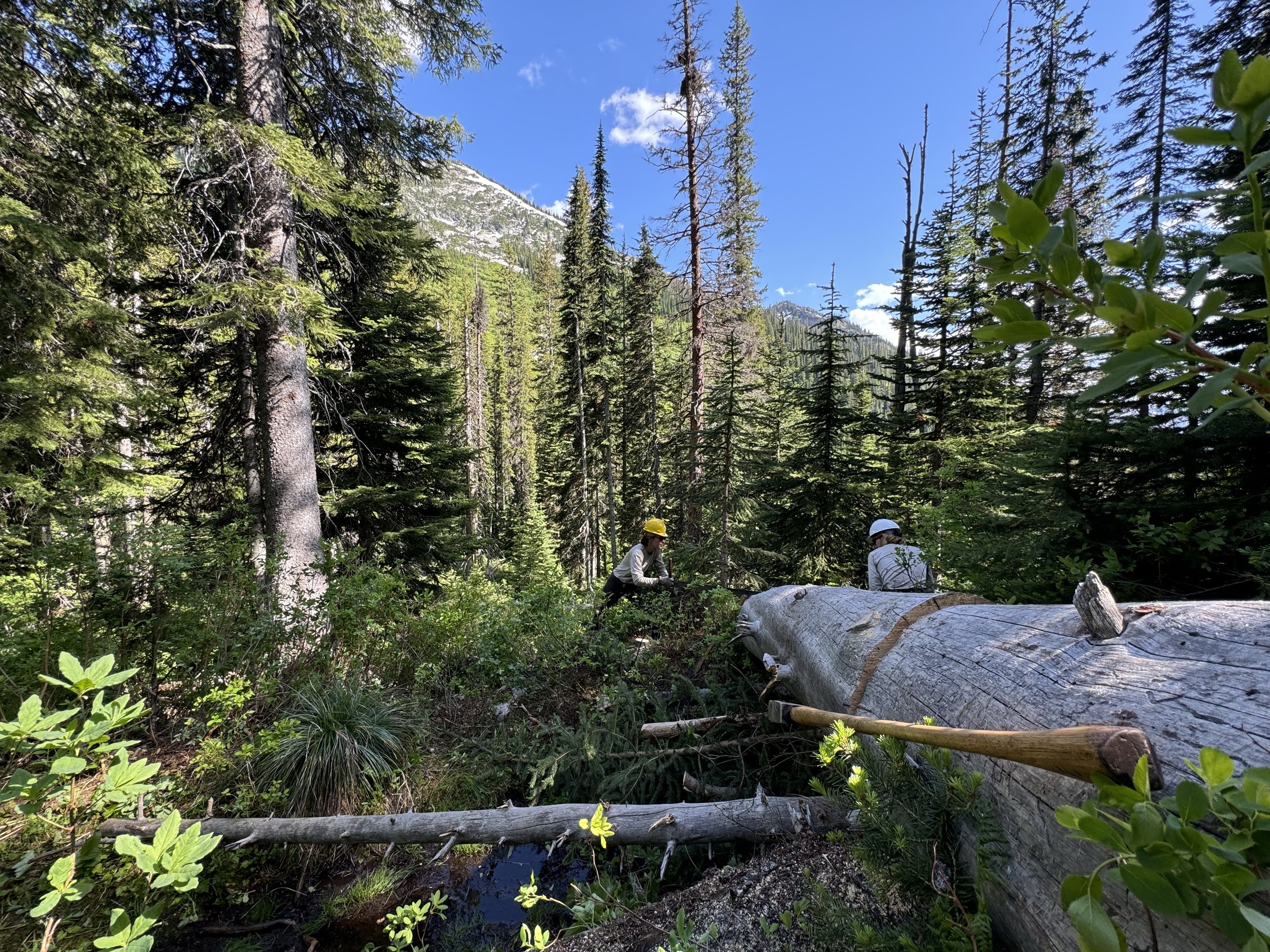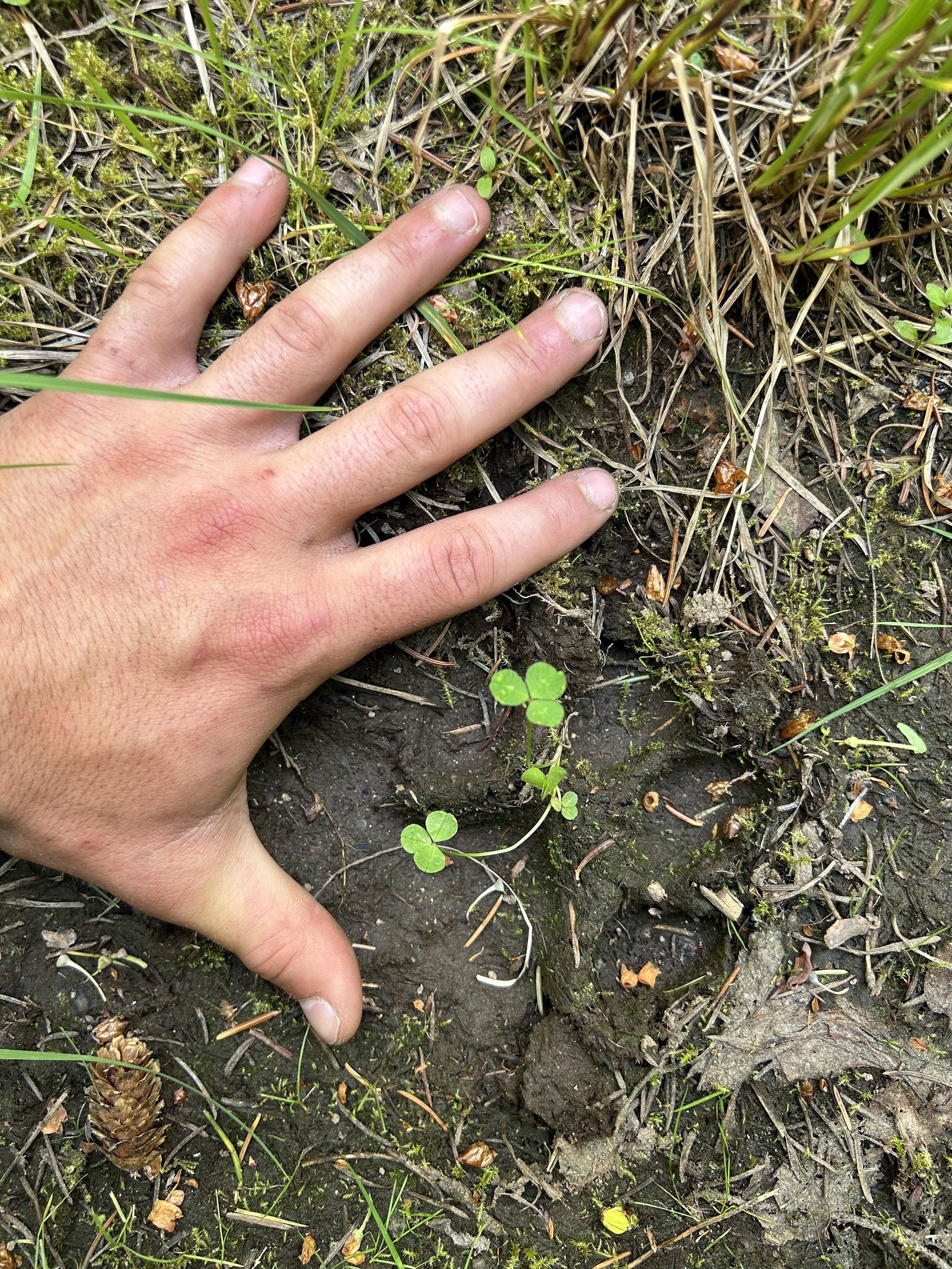Macy | Youth Wilderness Expedition- Program Participant
You had to be there to experience it. That is what I keep telling people about my time with the Selway Bitterroot Frank Church Foundation and their Youth Wilderness Expedition. This expedition taught me a lot more than just the Wilderness. Being a typical teenager I would stay on my phone for hours and try to get out of chores so when I got back to school my summer felt boring and unfulfilled
In December of 2023, I decided I was going to go to a summer camp. At first, I was going to go to a different summer camp until my mother, who is a teacher, told me about a Foundation that was taking teenagers out into the backcountry and teaching them about the Wilderness for free! I was hooked. That was what I was going to do this summer. I applied, anxiously waited, and got accepted!
In the car!
For months I prepared. I bought a pack, scavenged family gear, looked at maps, did trial hikes, literally everything physical I did was in preparation for this trip. I was going to do this trek and it was going to be easy. Even though I did all that training and all that preparation, I forgot to prepare myself mentally, so when the day came to meet the rest of my crew I felt wildly unprepared even though I had spent months thinking about this trip. Before I even knew what was happening my pack and I were loaded into a van (author’s note: yes, Ian, I know it's not a van) with 5 other teens and on a windy road to our home for the next 4 days.
Every time I've been asked what my favorite part of the trip was or what my highlight of the expedition was, I say the van ride up. It was my first sense of being alone even though I really wasn't. I had no contact with people I knew well, instead I had contact with 7 strangers who quickly became my friends. This sense of loneliness was just a taste test of the challenges I’d have to overcome.
The hike down to the lake was rather easy for me at least. Don't get me wrong, it took some time but the effects weren't so bad. Before my mom dropped me off she told me “you can do anything for an hour.” The entire hike down, I didn't say that once. The way up I said it every 2 seconds. The hike up kicked my butt. Whatever training I did could not compare to that. However, we had the best cheerleader known to man: Ian Harris the Youth Program Director, cheering us on the entire 1.6 miles up.
After one day I got sick of myself. Being a teen girl and being alone with your thoughts is a really hard thing to manage. I have always been really confident, but after being humbled by the trail and the idea of work the next day, I really had to fight to keep my confidence and motivation up. I also had to fight with the bugs that were eating us alive.
After two days in the Wilderness, I struggled with homesickness. I couldn't go a second without thinking of my family and my house. Every time I chopped back a bush, I dreamed of my air conditioner. Every time I pulled a saw, I thought of how much I missed my parents. Everytime I hit a wedge, I thought of how good my bed would feel.
Drawing of Macy by Hickory Glass, age 14.
After three days, I started to pay more attention to not only my surroundings, but also myself. I came to realize my body's needs. I learned when I was dehydrated, when I was overworking myself, and when I needed food. Ian Harris and our other trail leader Emma Sattleman, or better known to the crew as “Batman”, were always letting us take breaks to regulate ourselves and actually encouraging us to not work too hard. I noticed the quietness of the woods, the howl of the wind, the sound of the creek flowing. I even began to notice the bugs less. I realized I was actually looking for wildlife. I actively looked for snakes, frogs, and fish.
By day four, I didn't want to leave the quiet woods. I didn't want to leave the trails we worked so hard on. I didn't want to leave the campsite where I bonded with my crew. I didn't want to leave the lake we swam in until we shivered uncontrollably. I didn't want to leave the deer that invaded our campsite at night. I did not want to leave Walton Lake and the memories we made.
Overall the SBFC Youth Wilderness Expedition taught me how to act and care for the wilderness, how to use hand held tools, and how to accept troubles and let them pass through me. This trip was so much fun and I will miss it for eternity and will definitely be doing it next year!
Macy (age 13) is from Lewiston, Idaho. She participated in SBFC’s 2024 Youth Wilderness Expedition to Walton Lakes.





























































